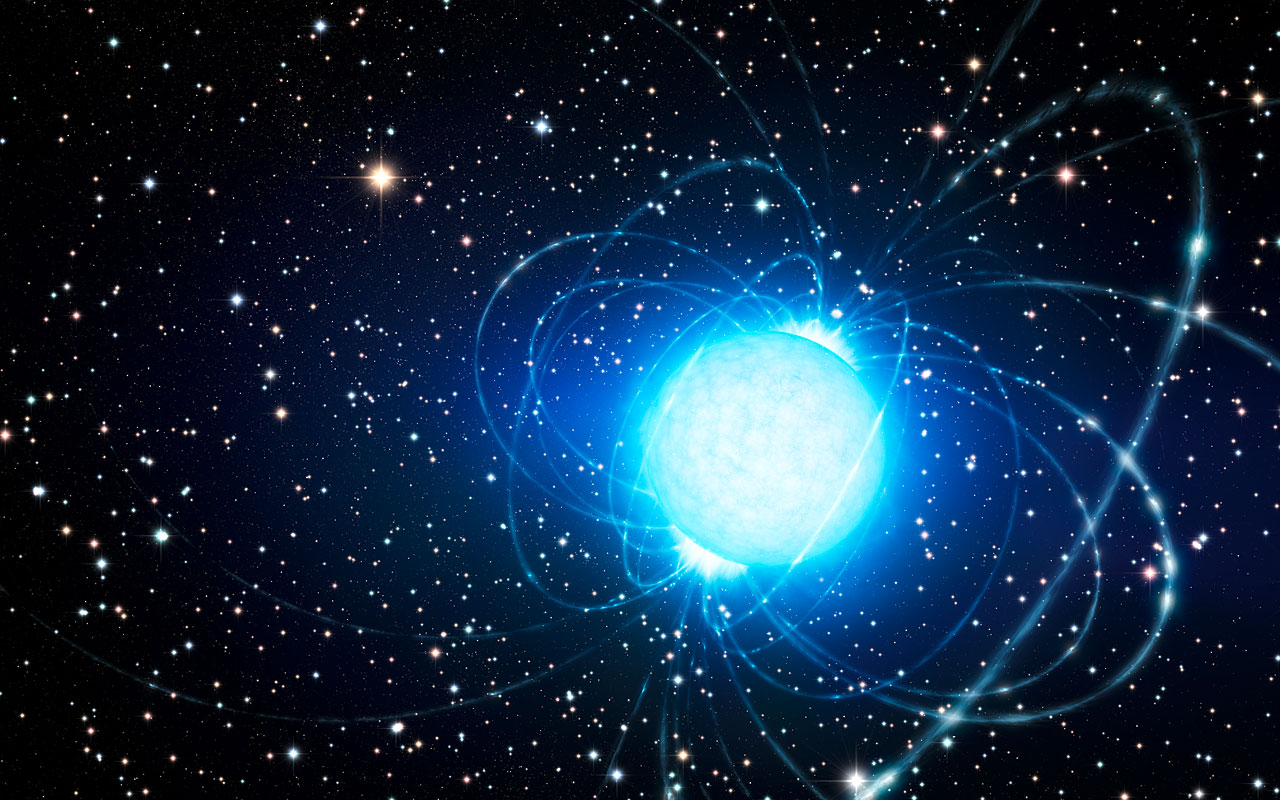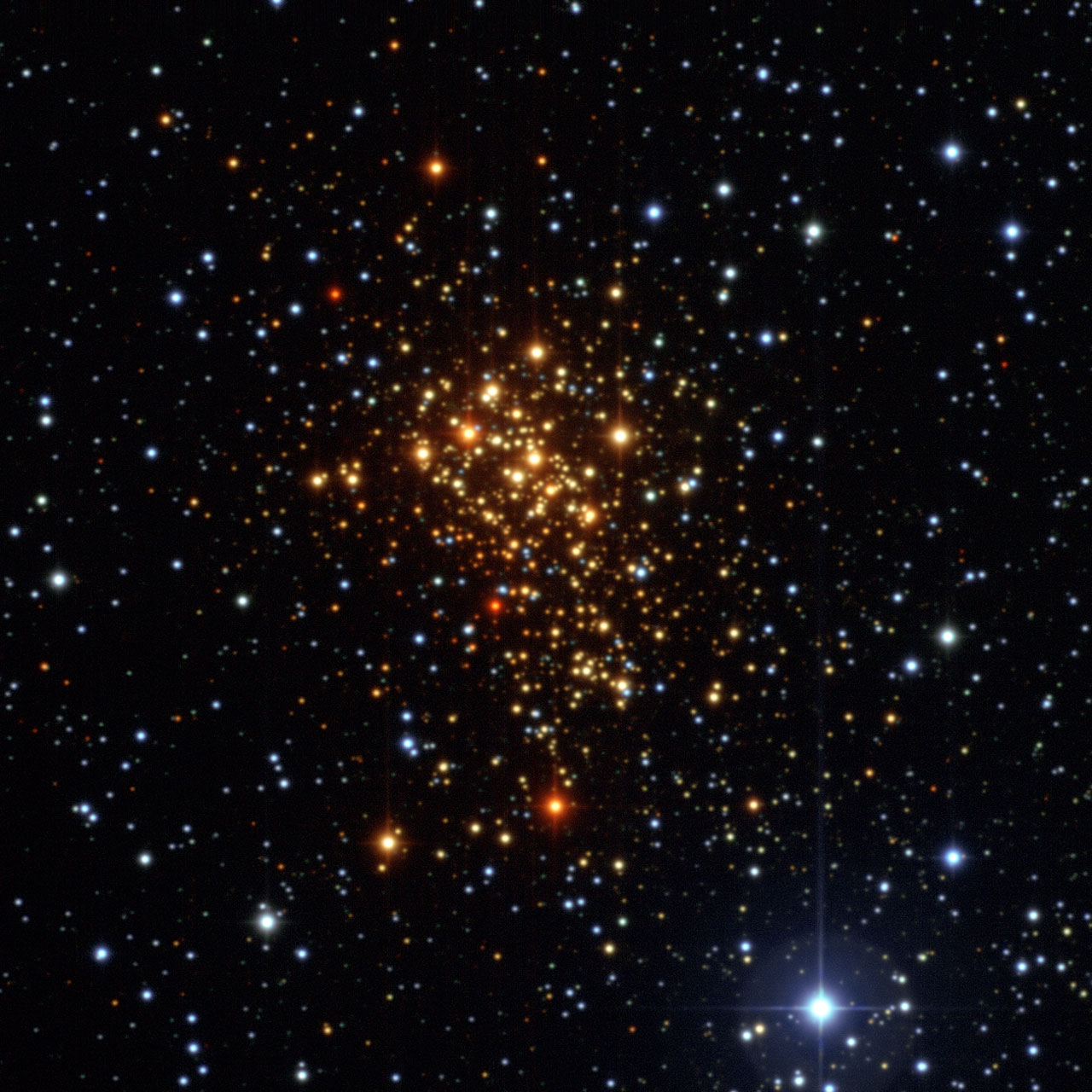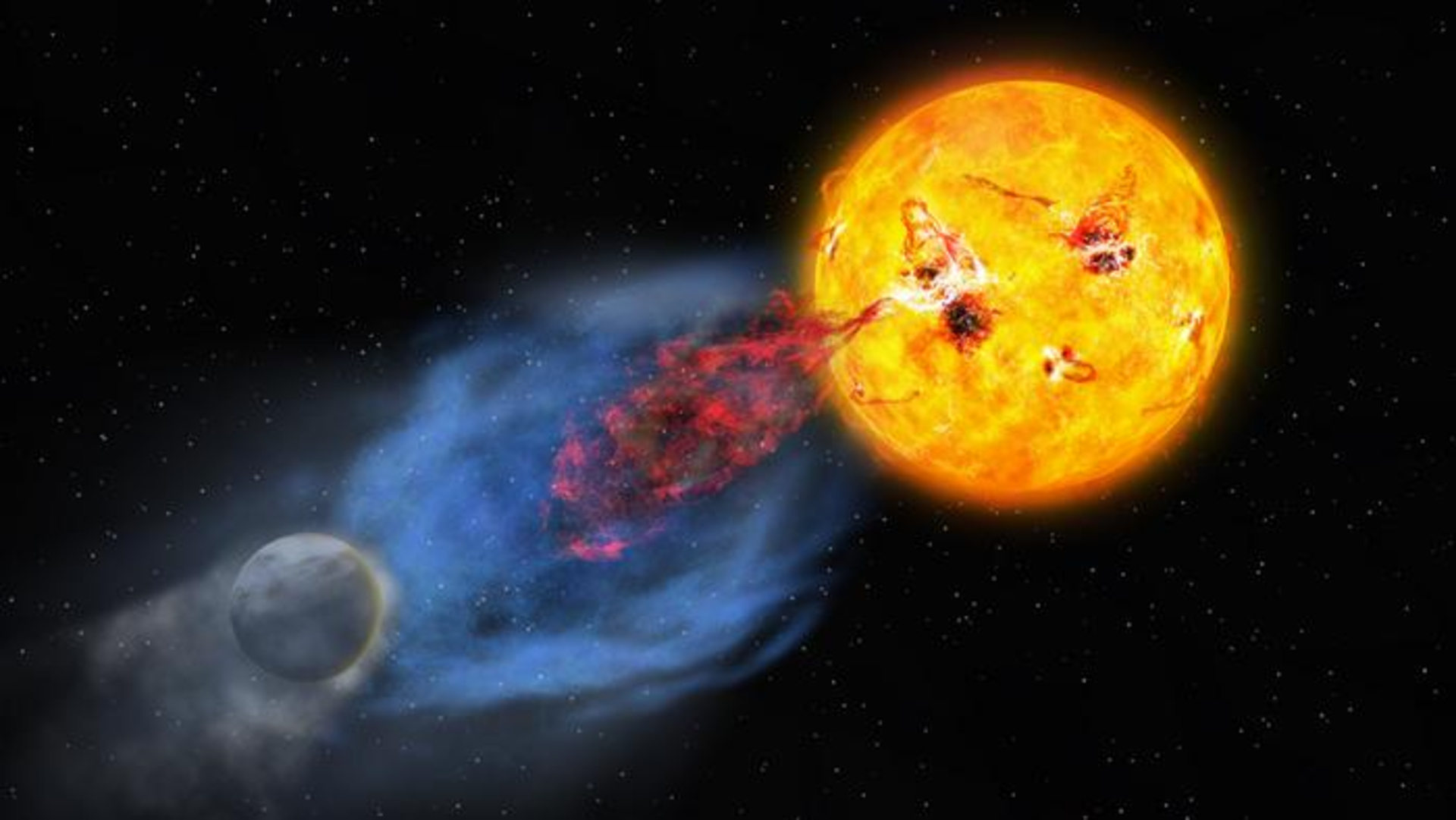Mysterious 'Magnetar' Likely Had a Star Companion (Video, Photos)

A single "runaway" star in a distant star cluster could explain how a massive supernova avoided collapsing into a black hole, leaving behind a remnant object instead.
The find explains the presence of a magnetar — a bizarre object that is not only highly dense but also extremely magnetic — in the star cluster Westerlund 1, about 16,000 light-years from Earth. Magnetars are a rare type of neutron star that is left behind after a supernova explosion. They are also known by their "starquakes" that send gamma ray radiation into the cosmos. You can watch a video about the magnetar on Space.com.
Magnetar CXOU J164710.2-455216 has been known for some time, but what puzzled astronomers was how it formed from an exploding star that was likely 40 times as massive as the sun. At that mass, nothing should have been left behind from the implosion besides a black hole. [10 Strangest Things in Space]
Finding a runaway star
Years ago, astronomers proposed that the magnetar was created from the gravity of two huge stars orbiting each other in a very compact arrangement, so small that their system would fit inside the Earth's orbit around the sun. That theory, however, required finding a companion star.
The new study looked for any "runaway" stars that would have been thrown out of the original orbit by the supernova explosion. One candidate — Westerlund 1-5 — behaved exactly as predicted.
"Not only does this star have the high velocity expected if it is recoiling from a supernova explosion, but the combination of its low mass, high luminosity and carbon-rich composition appear impossible to replicate in a single star — a smoking gun that shows it must have originally formed with a binary companion," said Ben Ritchie, an astronomer at Open University who co-authored the new study.
Breaking space news, the latest updates on rocket launches, skywatching events and more!
Double trouble
Using this information, the astronomers reconstructed the magnetar's history and concluded these objects likely form only in double star systems.
The story begins when the more massive star in the binary system starts to burn through the last of its fuel. Its outer layers shed and then transfer over to the companion star — the future magnetar. The companion speeds up its rotation, which is believed to be the key to the magnetar's highly magnetic field.
Eventually, the companion star grows so massive that it sheds those layers. Much of this material bleeds into space, but some gathers again on the original star — creating a unique chemical signature. It is this second "mass transfer" that stops the companion star from turning into a black hole when it implodes.
A paper study on this research will be published in the journal Astronomy and Astrophysics, led by Open University's Simon Clark.
Follow Elizabeth Howell @howellspace. Follow us @Spacedotcom, Facebook and Google+. Original article on Space.com.
Join our Space Forums to keep talking space on the latest missions, night sky and more! And if you have a news tip, correction or comment, let us know at: community@space.com.

Elizabeth Howell (she/her), Ph.D., was a staff writer in the spaceflight channel between 2022 and 2024 specializing in Canadian space news. She was contributing writer for Space.com for 10 years from 2012 to 2024. Elizabeth's reporting includes multiple exclusives with the White House, leading world coverage about a lost-and-found space tomato on the International Space Station, witnessing five human spaceflight launches on two continents, flying parabolic, working inside a spacesuit, and participating in a simulated Mars mission. Her latest book, "Why Am I Taller?" (ECW Press, 2022) is co-written with astronaut Dave Williams.


